
Both photo series of Bernard DeCou made in Tsarskoe Selo and in Peterhof feature a charming baby carriage. At first I noticed how handy – and certainly also comforting for the child – is that due to the high substructure, the child’s and the adult’s face are almost at the same height. Then I was captivated by the complex steampunk structure that seemed to be put together from a high chair, a garden barrow and a – or rather two – Victorian velocipedes.
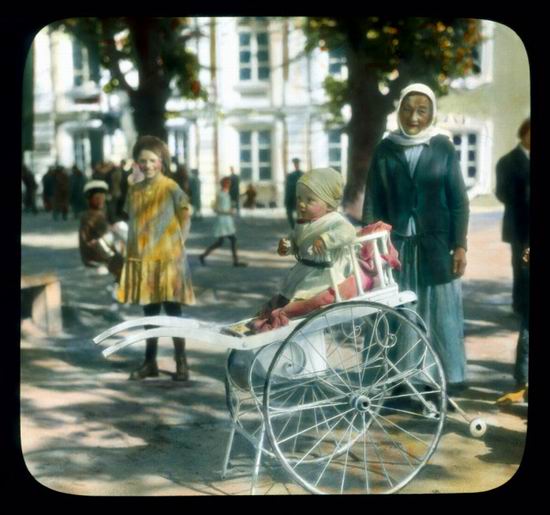
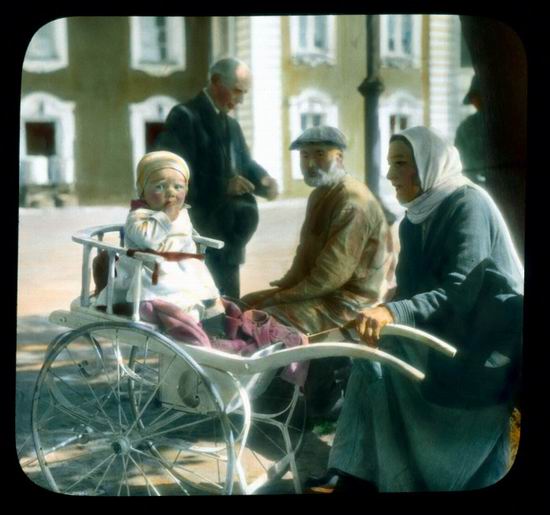
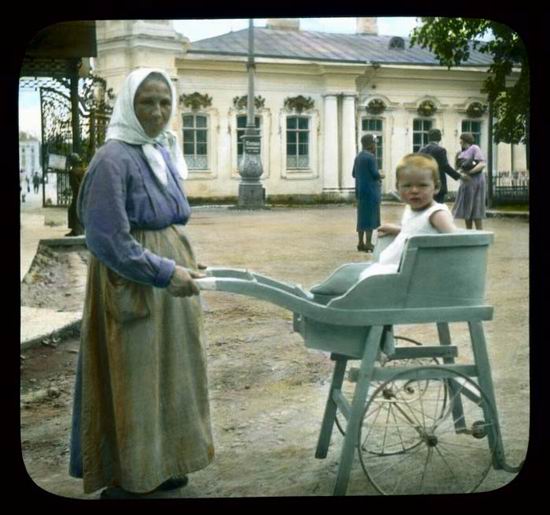
Since I could not figure out whether it was a carriage type widespread in the period or rather some kind of special Russian invention, I began to search over the web. And soon I came across a number of similar structures.
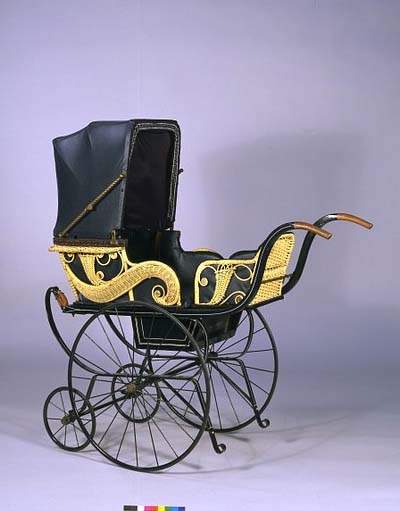

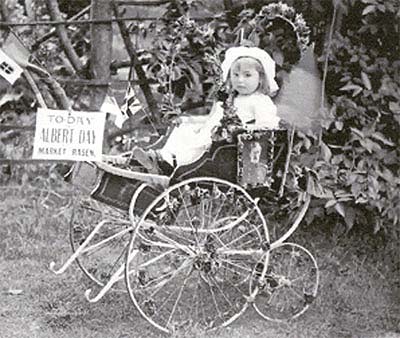 Emilienne Reeth, one of a Belgian family in Market Rasen who became refugees when
Emilienne Reeth, one of a Belgian family in Market Rasen who became refugees whenGermany invaded their country. ‘Albert Day’ was a fundraising effort
for Belgian refugees and refers to King Albert of Belgium,
whose portrait can be seen on the side
of the perambulator. 1915.
And if the question was raised by a Russian photo, so it was the Russian net where I found the most answers. Among other sources, particularly informative was the stroller history published on Mirabella’s blog, the vintage photo collection of Puzovok as well as the blog of Marinni which has published good selections of photos of ancient baby carriages more than once. On their basis, the following short history of the stroller emerged.

The historical antecedent of today’s baby carriage was, as its name suggests, the horse carriage scaled down to child size, such as these:
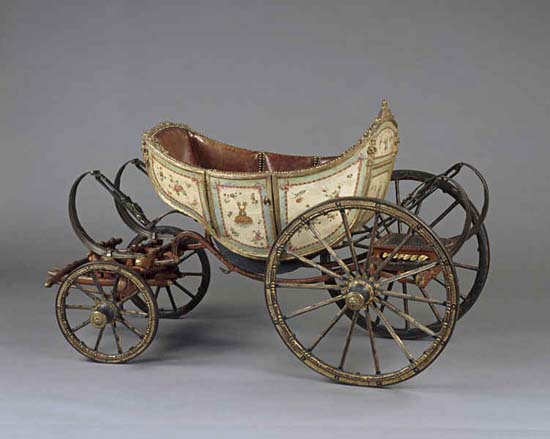 Goat-drawn carriage of Dauphin Louis-Charles, the later Louis XVII in Versailles, the Little Trianon palace
Goat-drawn carriage of Dauphin Louis-Charles, the later Louis XVII in Versailles, the Little Trianon palace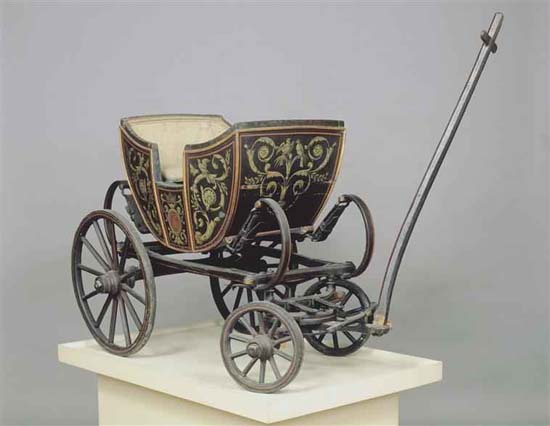
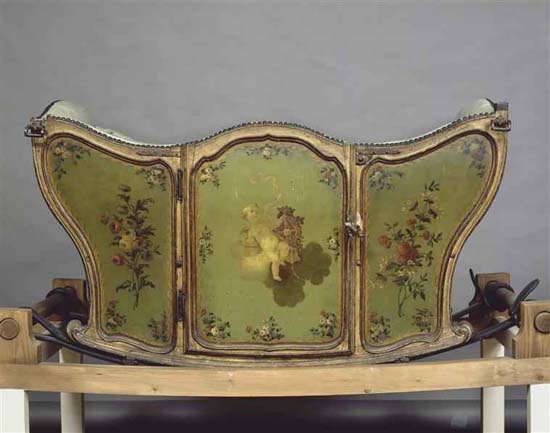
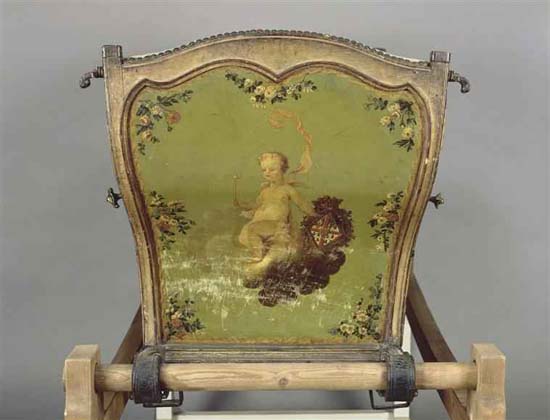

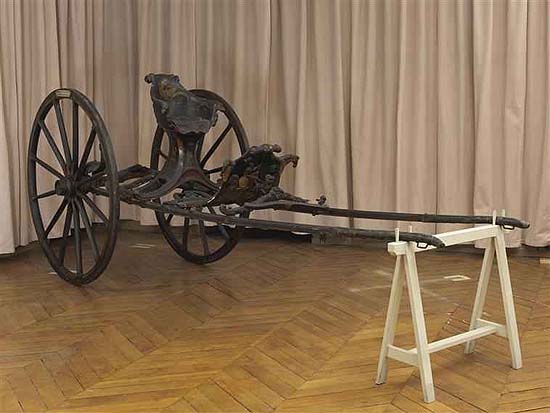
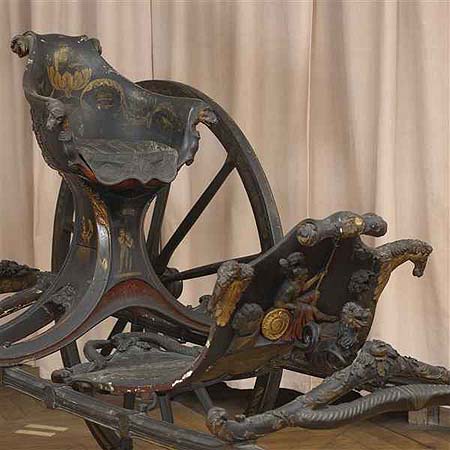
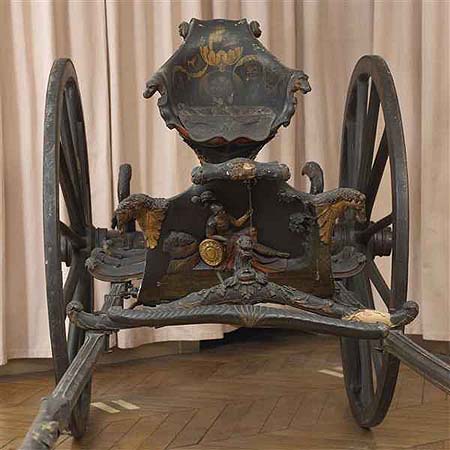
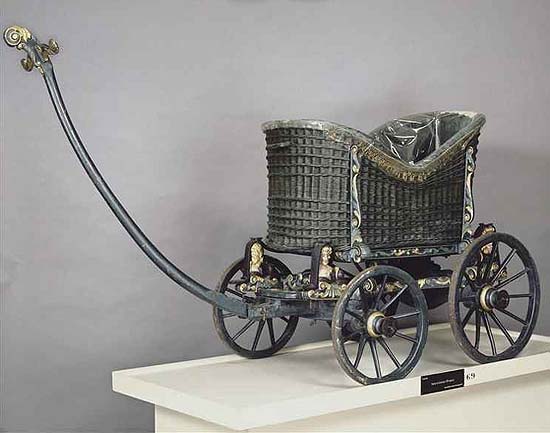
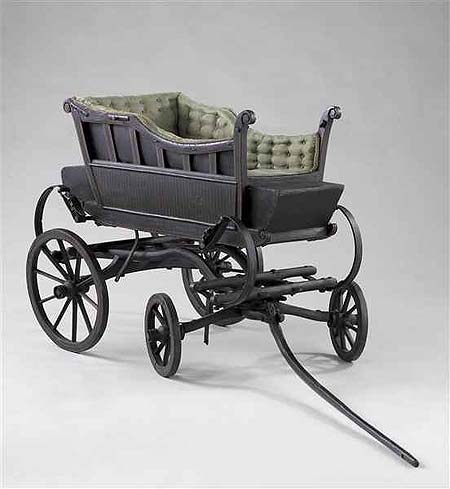
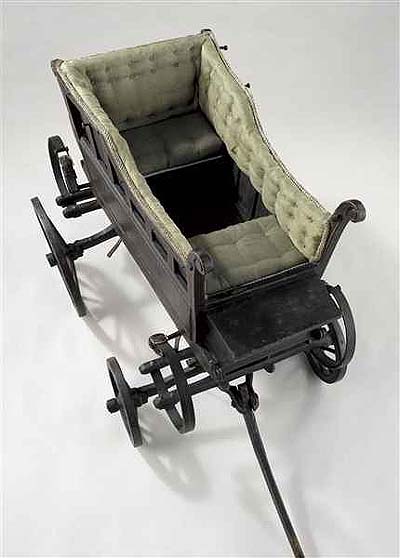
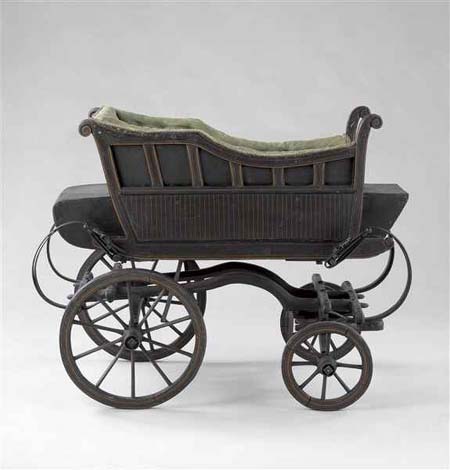

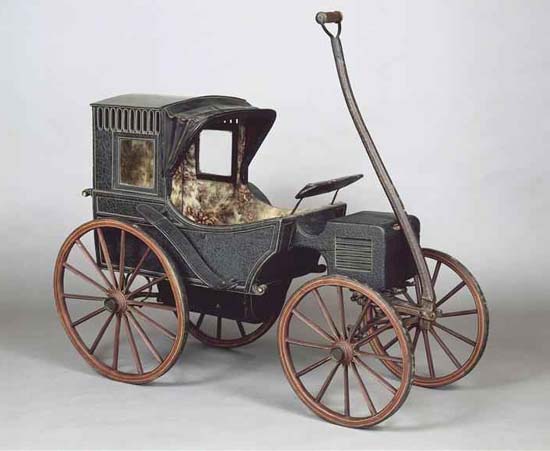
Instead of horses, these carriages were drawn by some smaller animal. Usually a goat, as we see on the earliest representations.
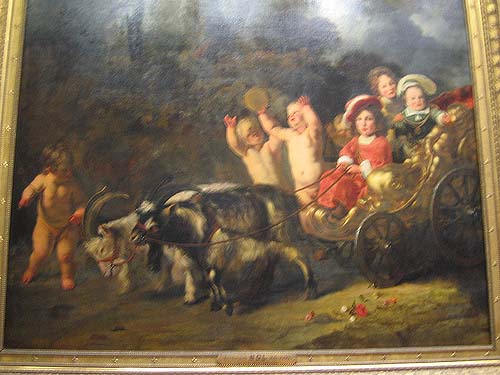
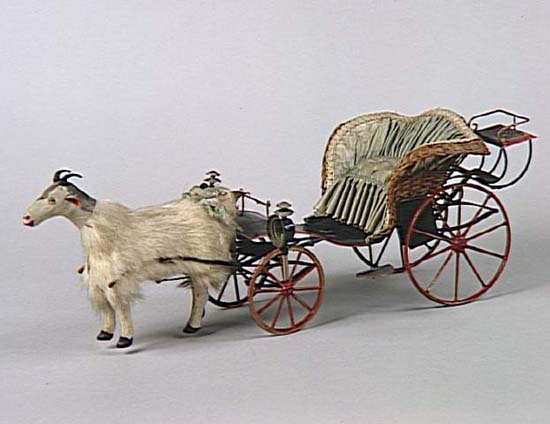
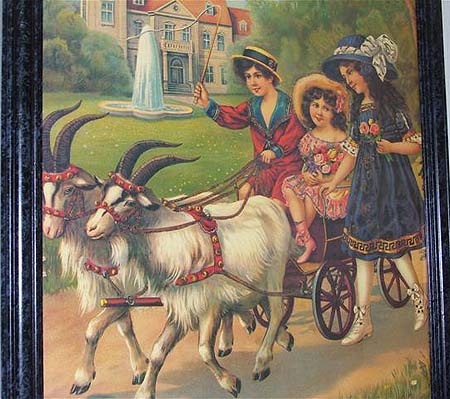
The goat-drawn chariot was popular even in the late 19th century, both in Europe and in America.
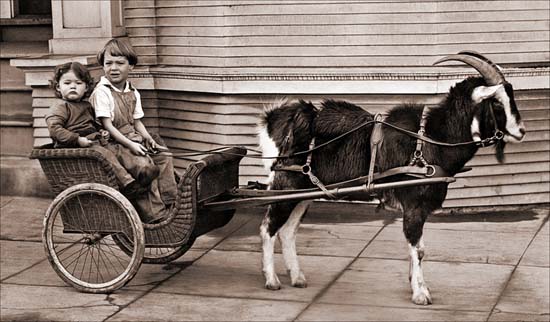
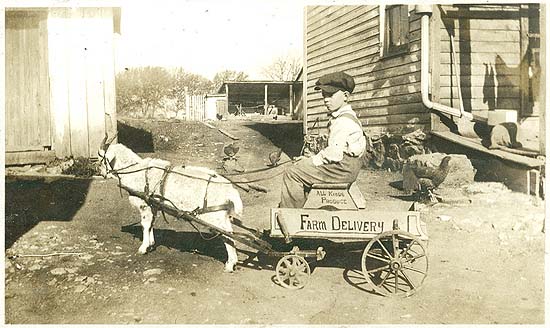
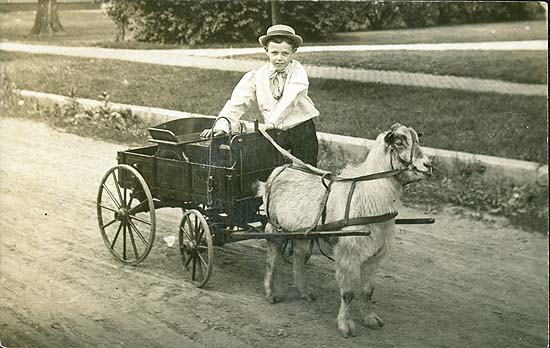
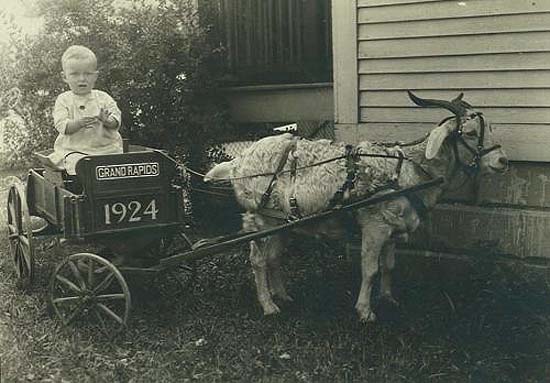
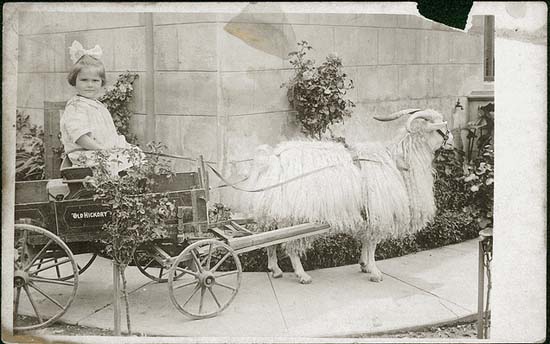
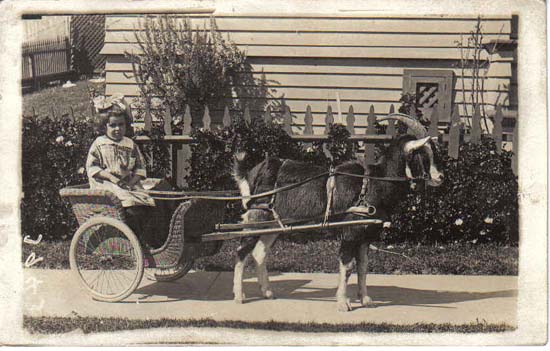
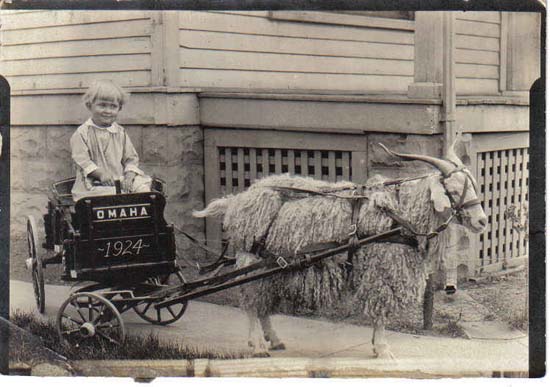
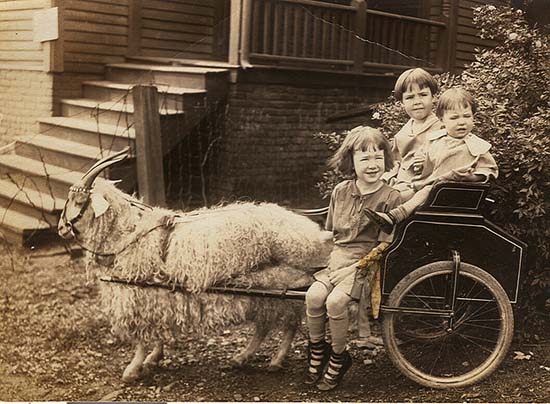
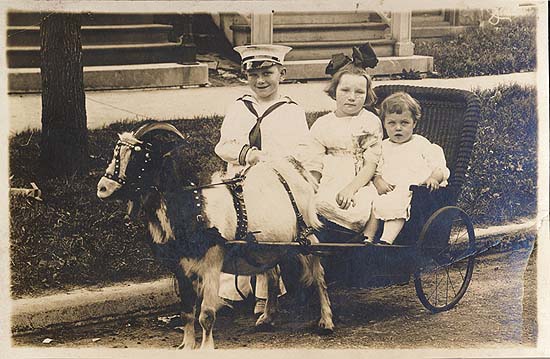
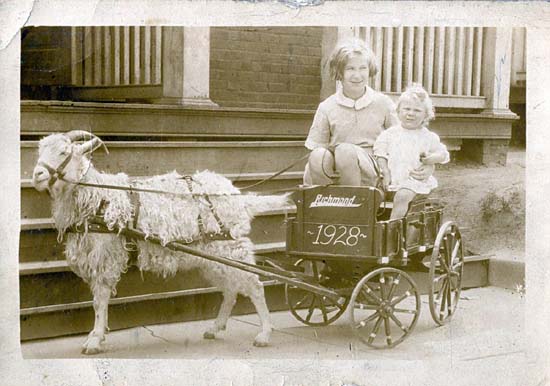
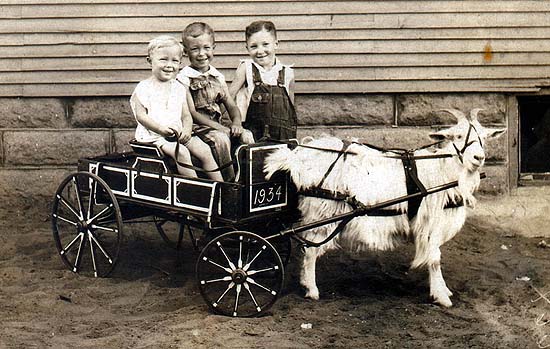
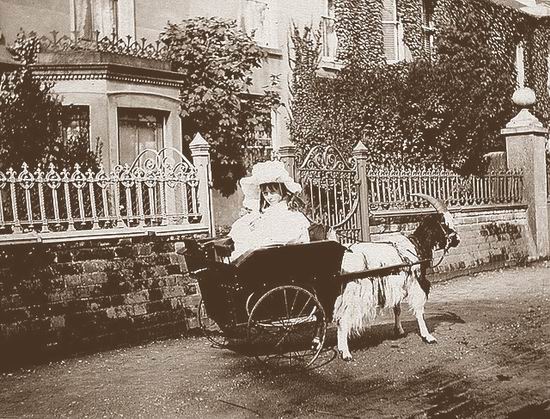
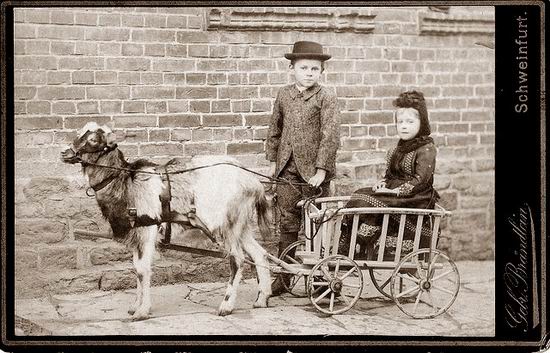
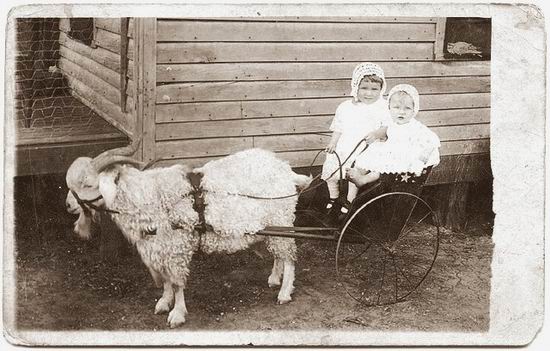
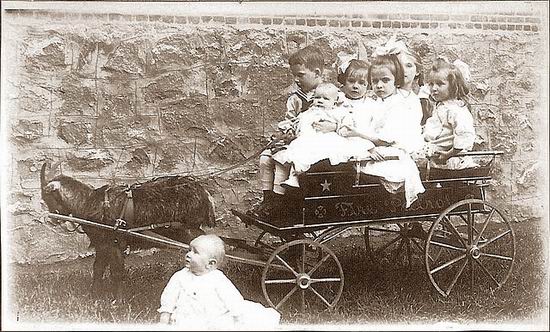
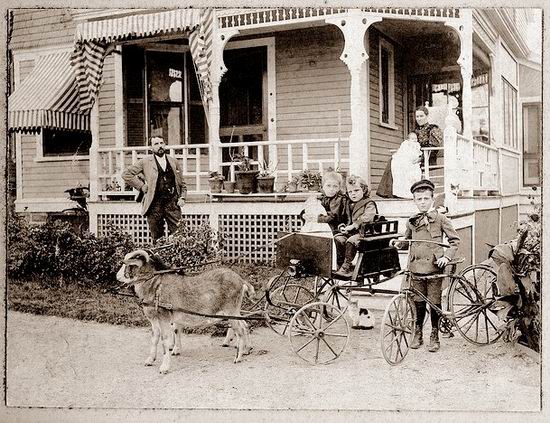
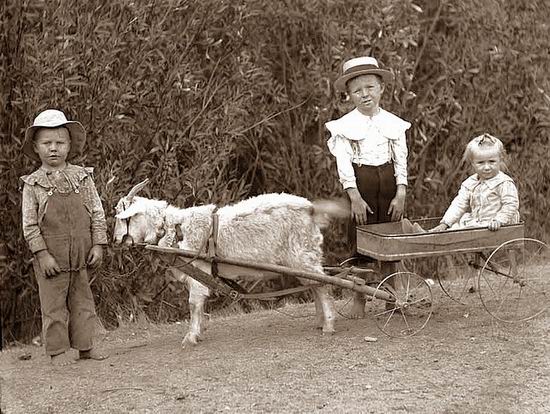
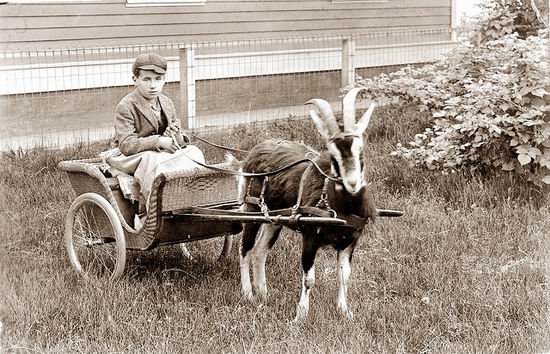
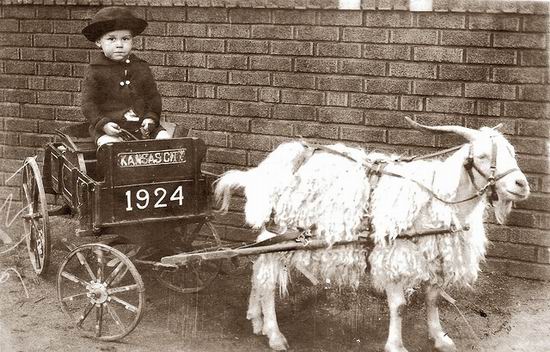
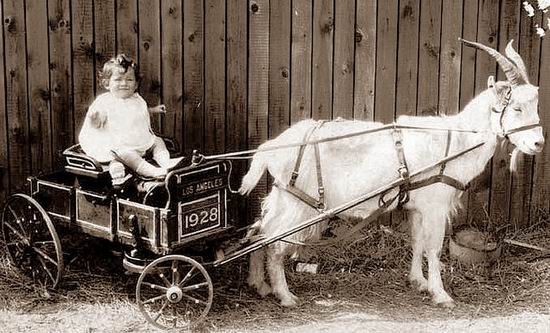
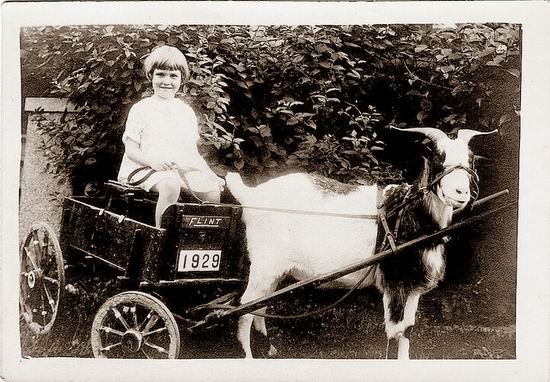
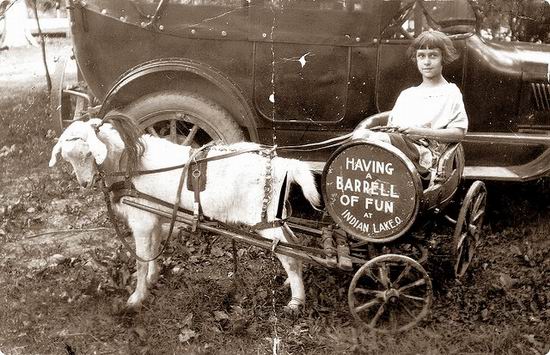
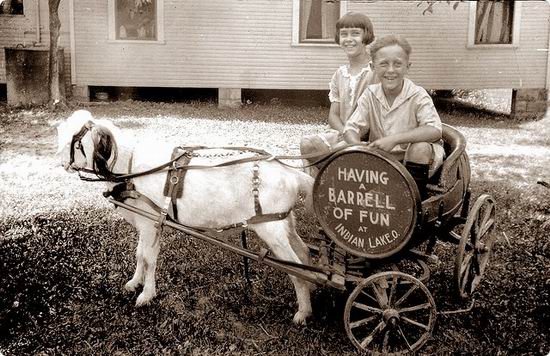
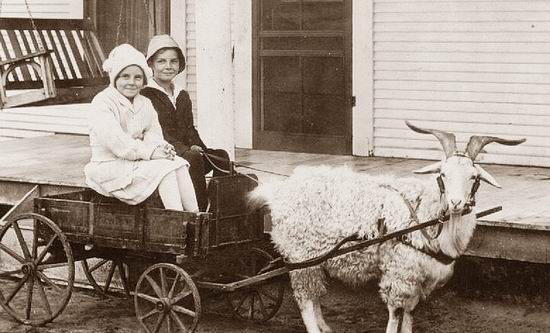
An obvious solution – as it was more similar to the carts of the adults – was to use a pony or a donkey to draw the carriage. The following one was used by the photographer Whitaker as an accessory to his photos in the resort place of Southend-on-Sea.
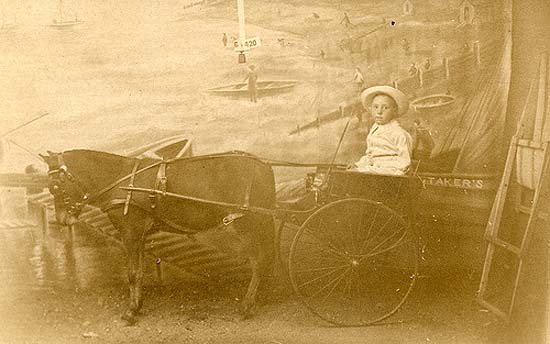
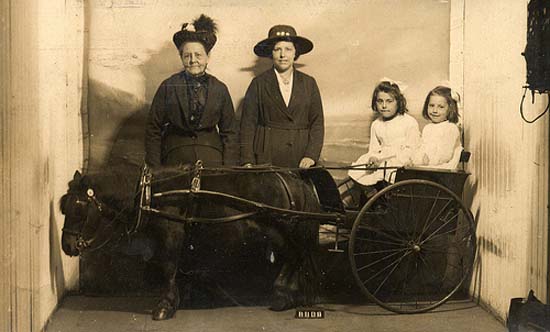
The donkey was not a despised beast of draught either. Even the last Russian heir to the throne, Czarevich Alexei used such carriage in Tsarskoe Selo in 1909:
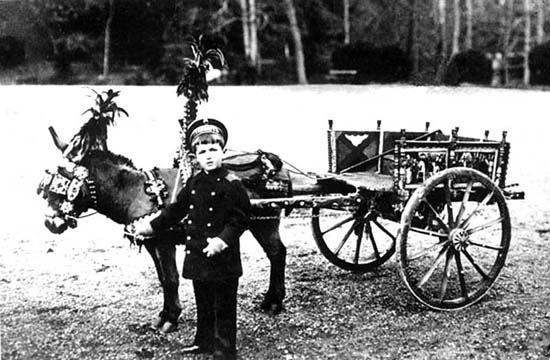
Dog-cart was also in vogue not only in the northern regions, but all over Europe from the Baroque period.
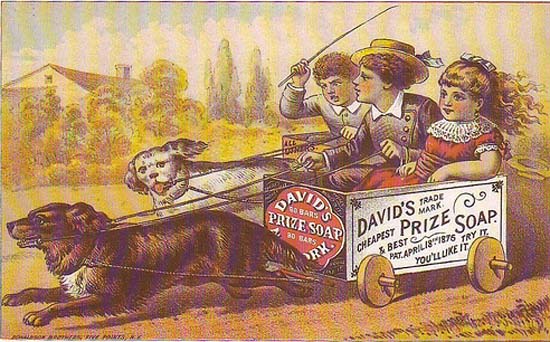
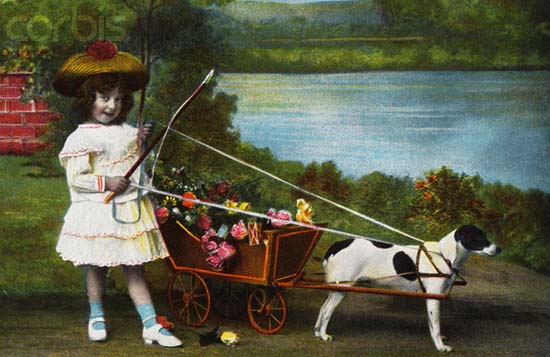
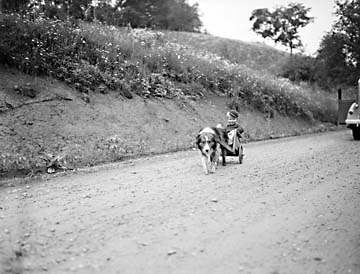
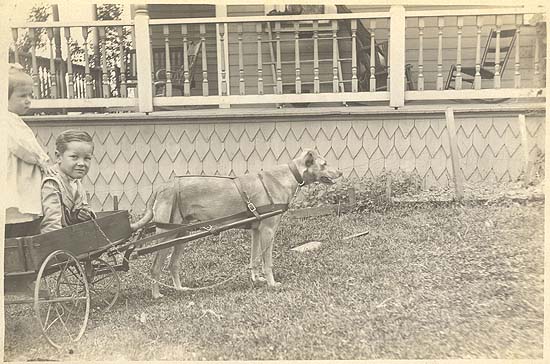
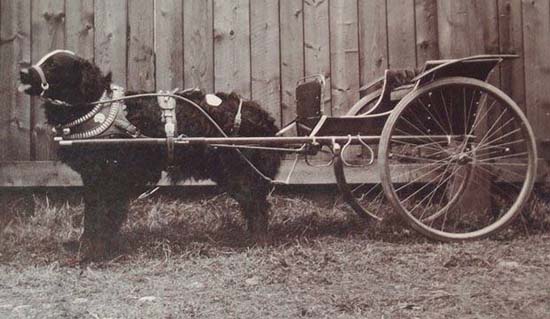
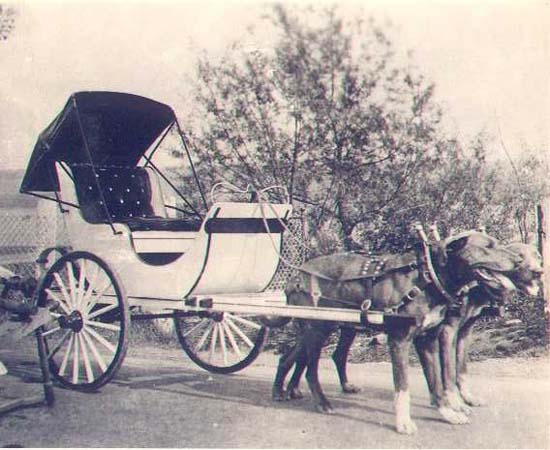
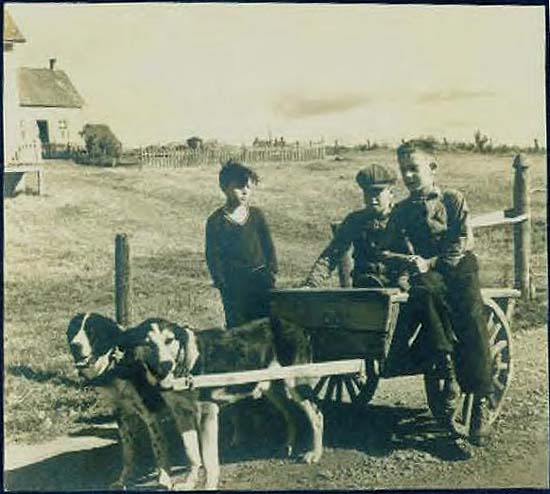
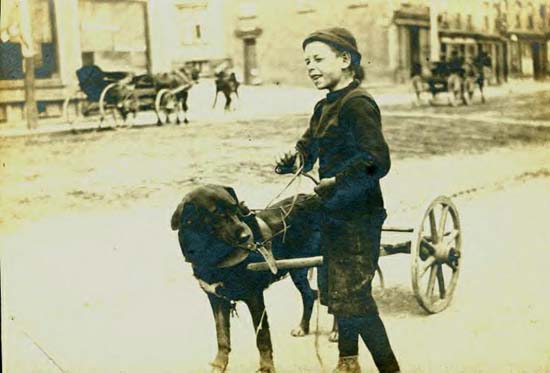
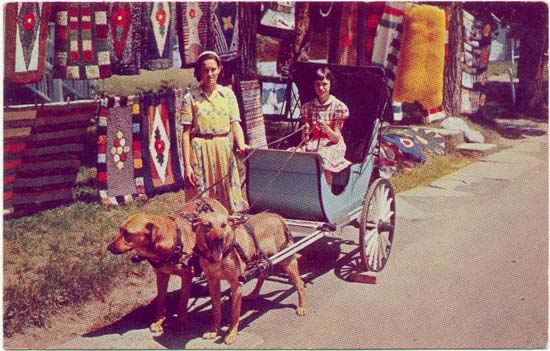
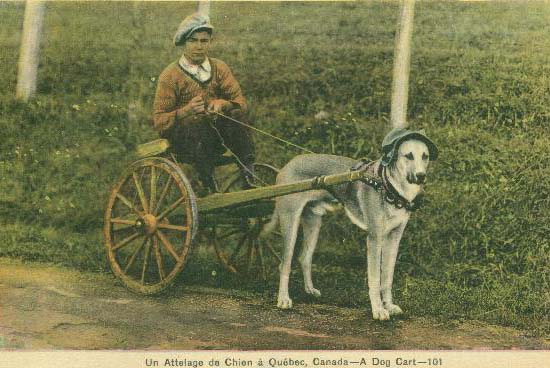
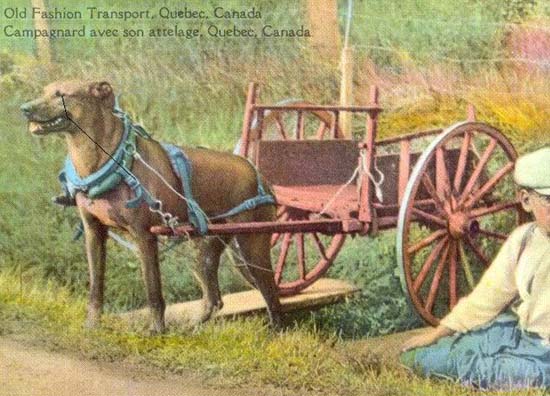
We note only in parentheses that dogs were also used for business transport, although even so their leaders often were children.
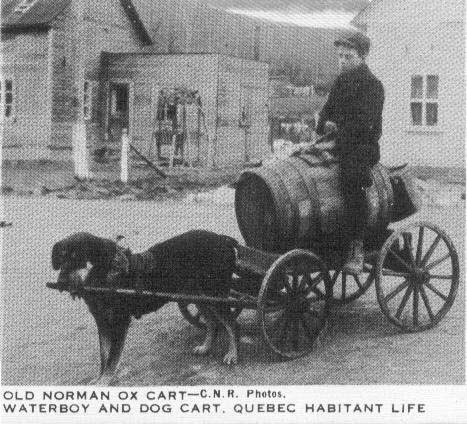
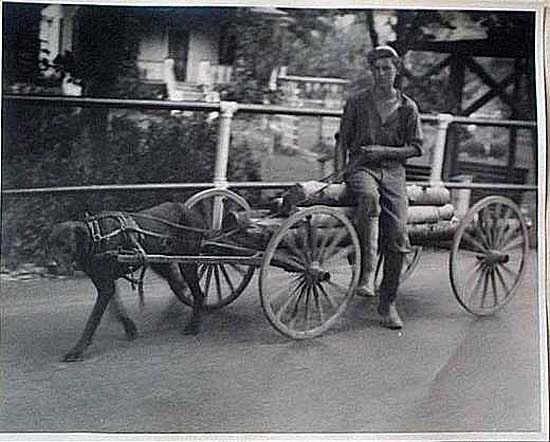
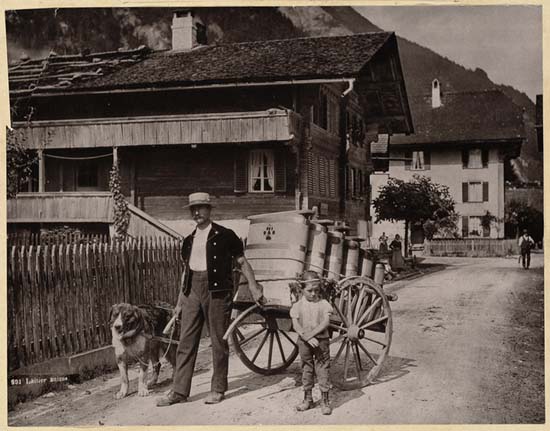
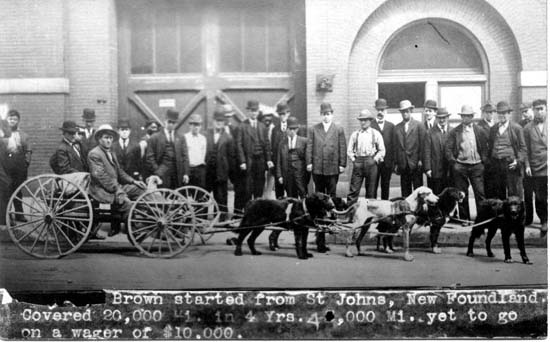
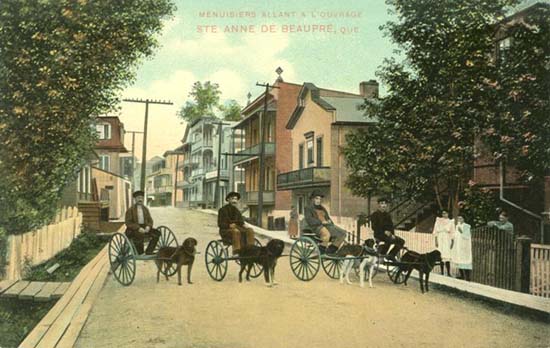
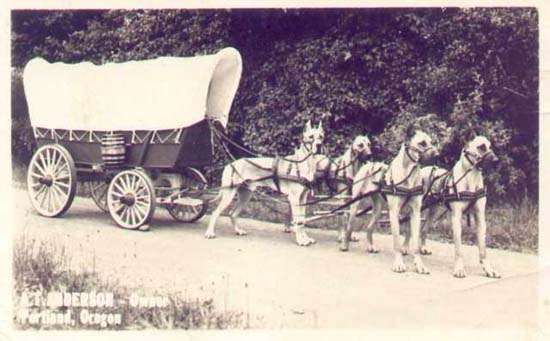
Instead of pulling the cart, the dog could also sit in it if there was a more suitable traction force…
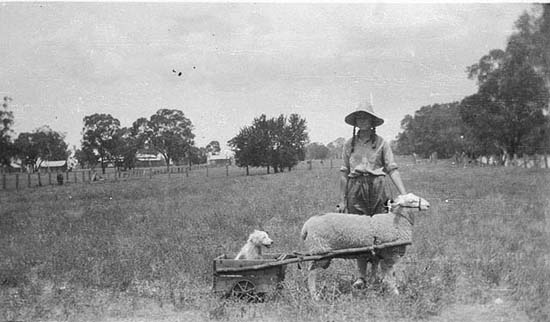
Children carriages were sometimes drawn by quite exotic draft animals.
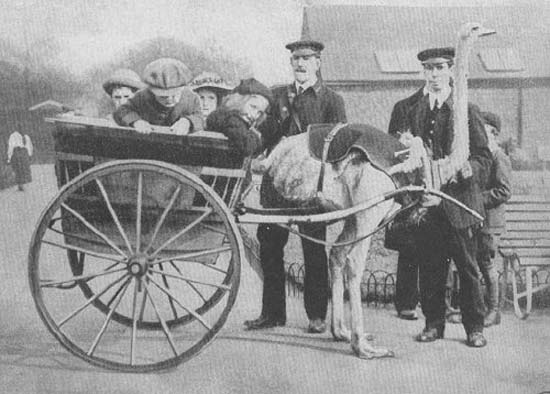 Ostrich cart rides for children helped pay for the animals’ upkeep at zoos in the early 20th century (1929)
Ostrich cart rides for children helped pay for the animals’ upkeep at zoos in the early 20th century (1929)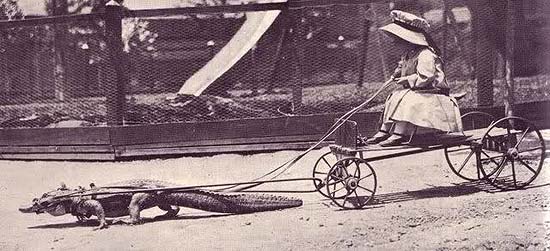
And finally the cart was also pulled by human power – and this is where the history of the actual baby carriage begins.
Note the word pulled. In fact, the history of the baby carriage driven by human power is divided into two phases. In the first one the mother or the nanny pulled the small wagon just as the above draft animals did. They began to push it only after Charles Burton in 1853 patented the baby carriage with a handle. These two phases are also reflected by its two different kinds of English names: baby carriage/buggy on the one hand and pusher/pushchair on the other.
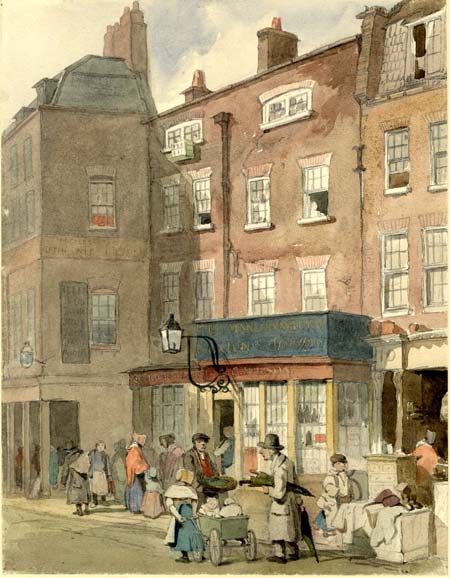
Within the pushing phase there were also two distinct periods: when the child continued to look forward, as in the animal-drawn carriage, and when he or she turned to the mother to remain in contact with her along the way. However, as to its form, the stroller still followed the model of the ancient carriage for decades, that is, the child had to sit in it, which made it unsuitable for the transport of very young infants. This was only possible towards the end of the century, when the chairs began to follow the model of the cradle instead of the carriage.
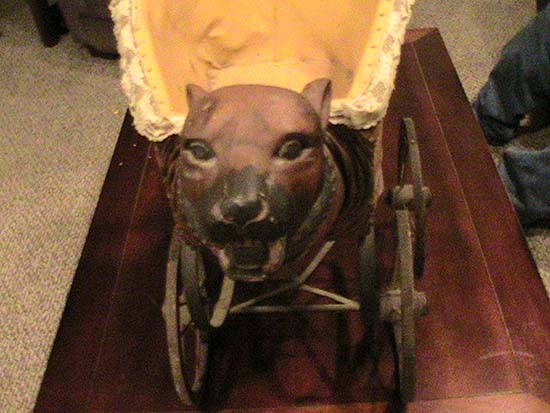
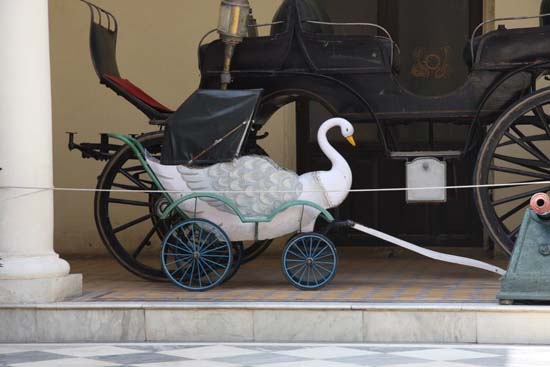
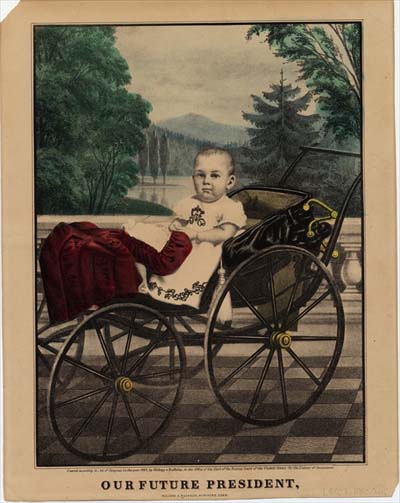
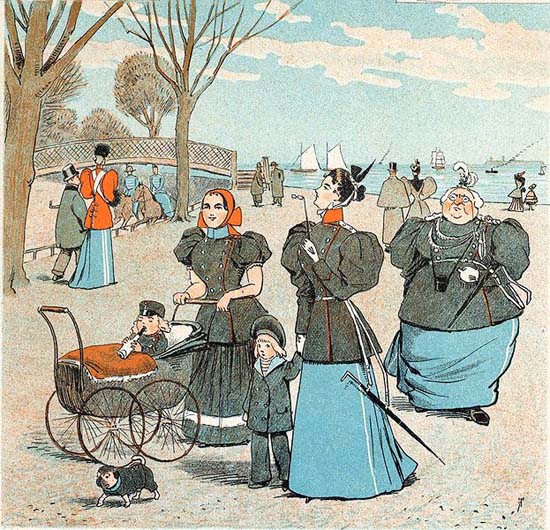
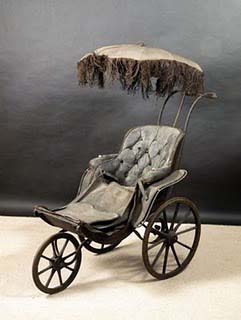
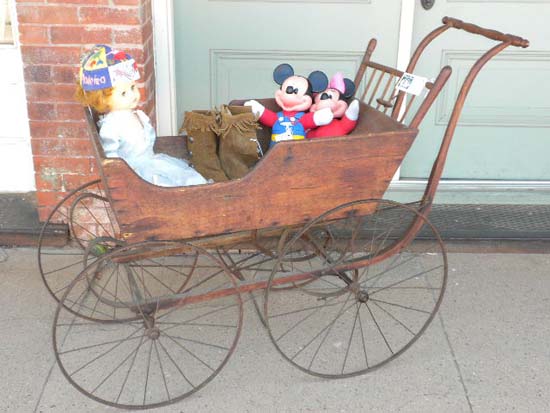
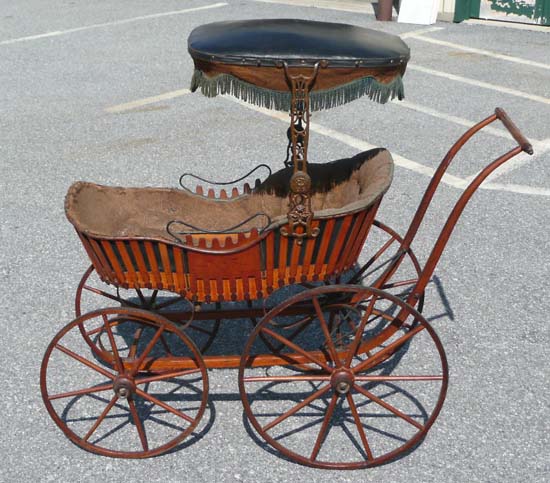
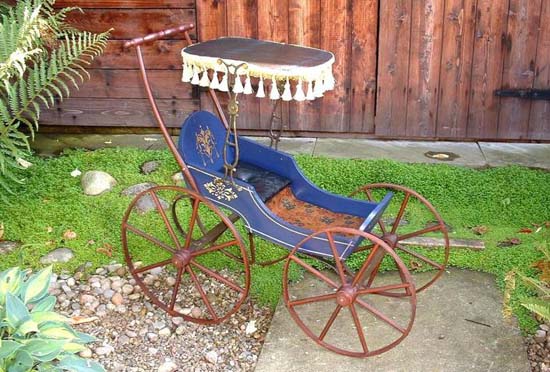
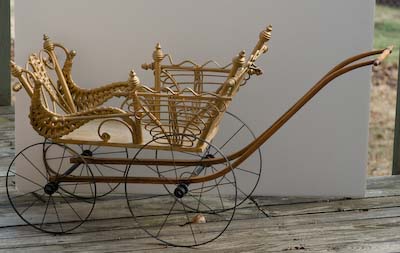
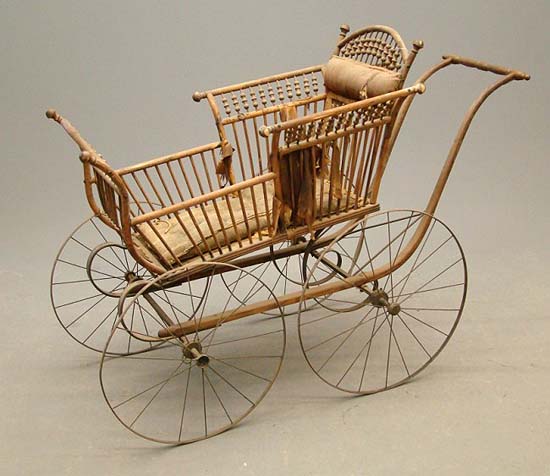
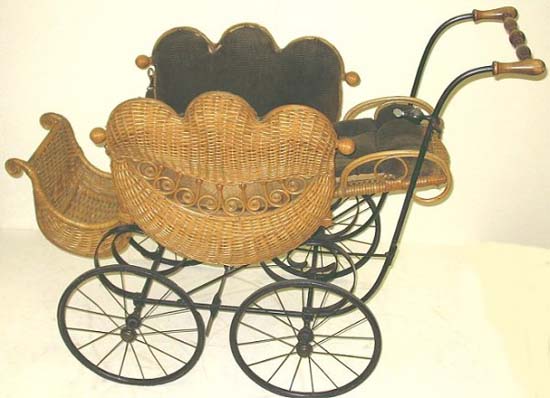
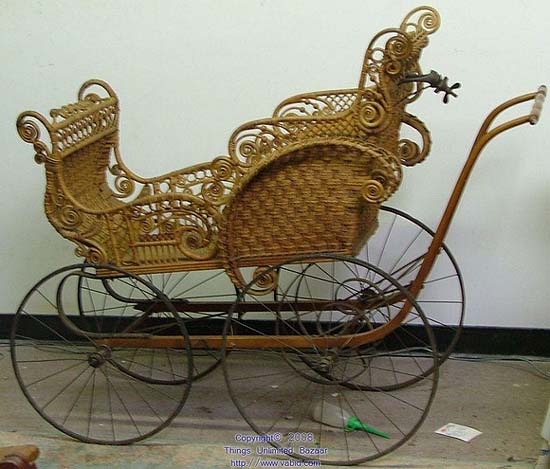
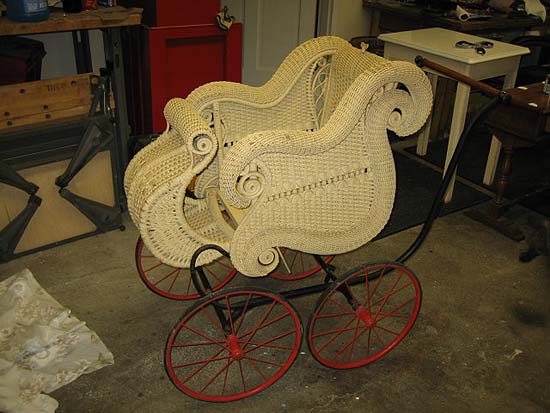
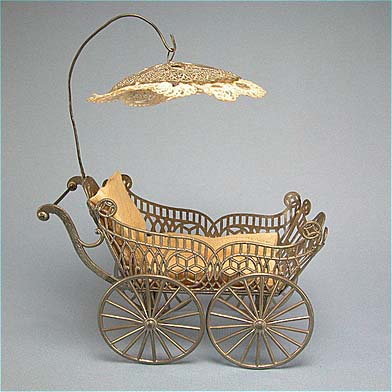
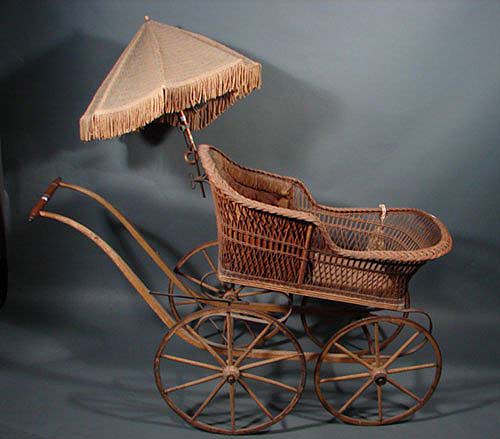
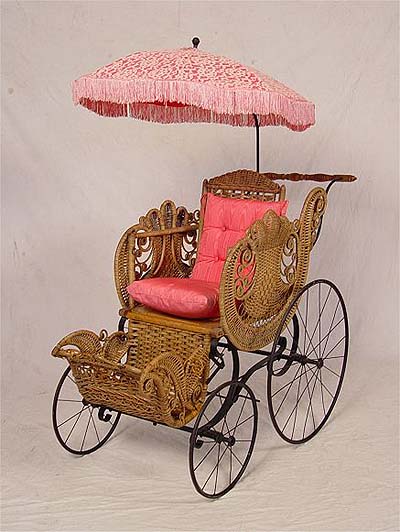
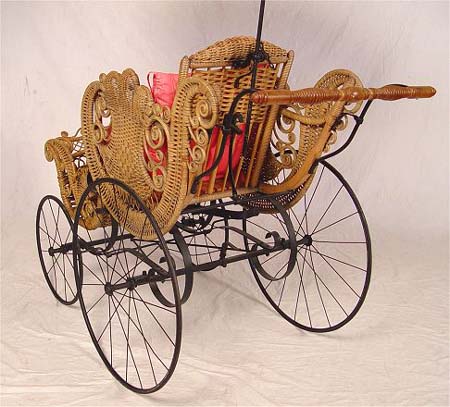
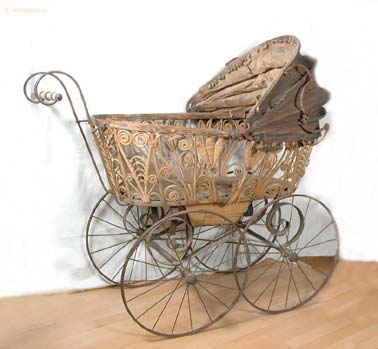
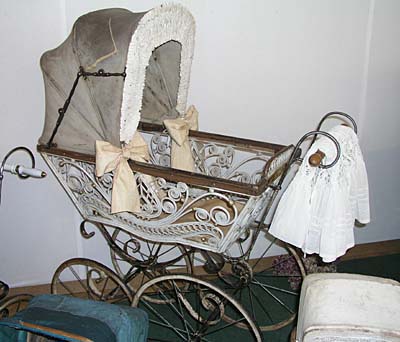
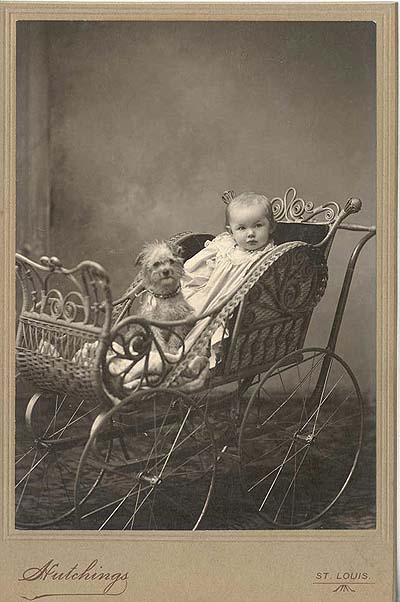
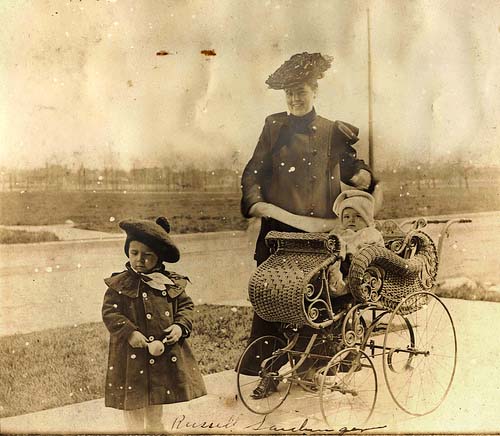
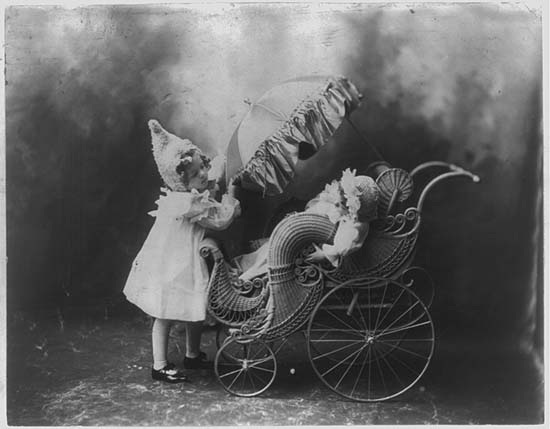
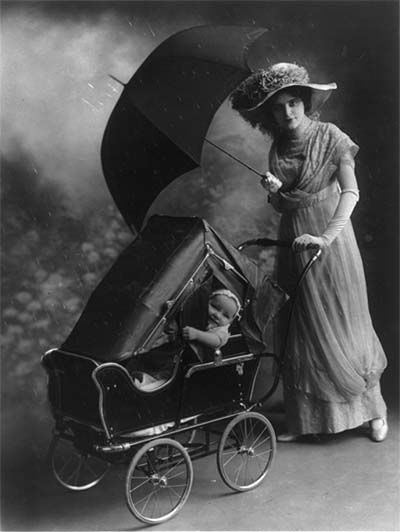
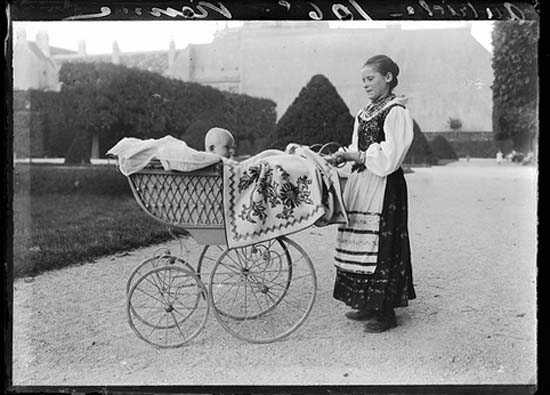
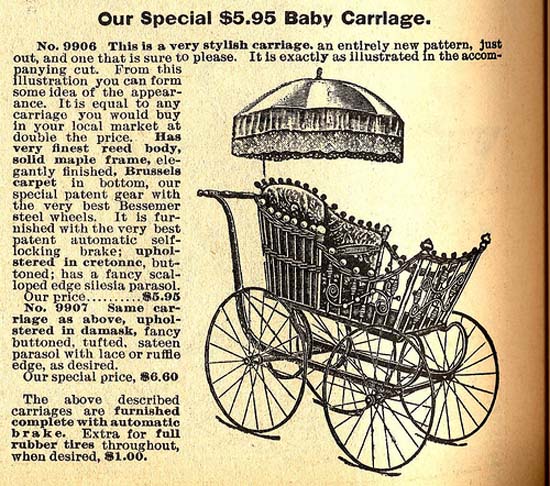
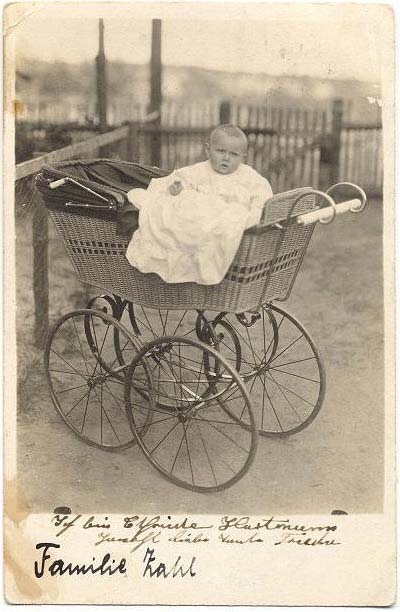
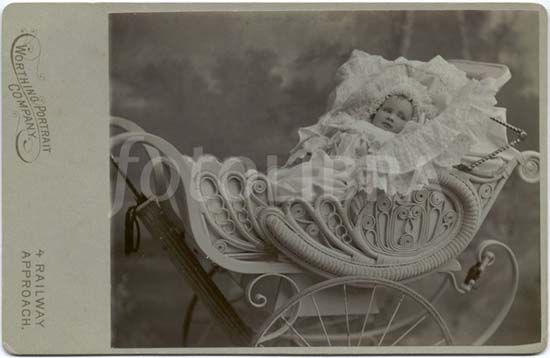
The child carriage was sometimes also combined with other objects. For example, with a high chair which was already known in the 17th century.
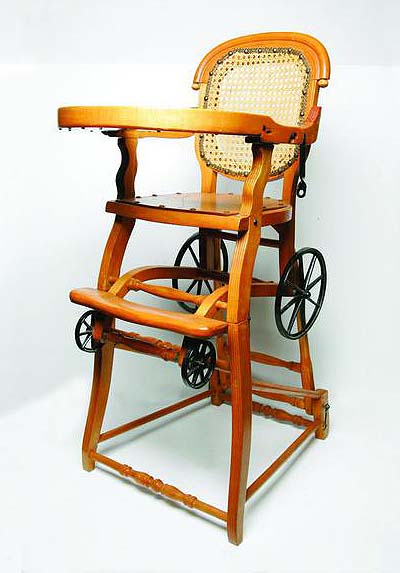 Late Victorian pine high chair, which converts to a pram, made in the Australian goldfields. Australia, ca. 1880
Late Victorian pine high chair, which converts to a pram, made in the Australian goldfields. Australia, ca. 1880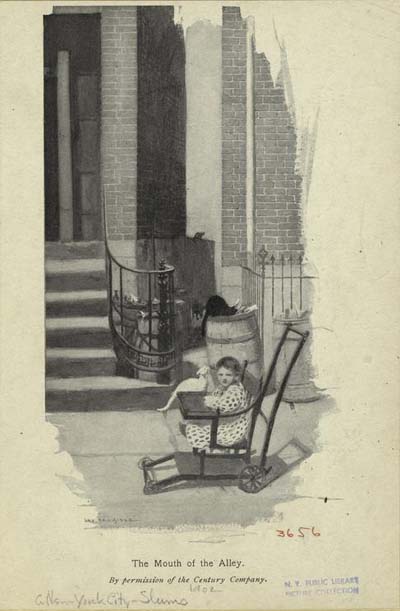
This is thus the genealogy behind the carriages seen in the parks of St. Petersburg and their Victorian companions which, as to their shape, are still somewhere between a goat- or pony-drawn two-wheel cart and a four-wheel stroller pushed by the mother. But in 1931, when these photos were made in Russia, this kind of carriage has been long obsolete in Britain. It is very probable that even in Russia they were conserved together with the remnants of the bourgeoisie and within a couple of years they disappeared together with them, like so many things that were captured by DeCou in the last minute.
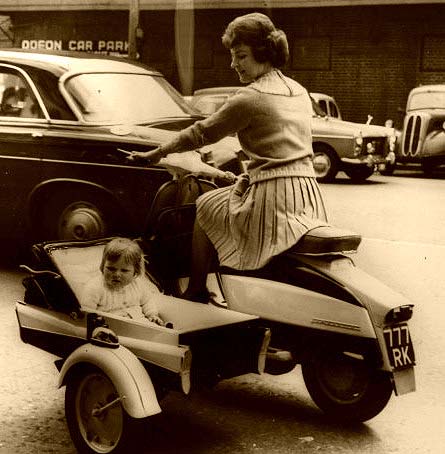
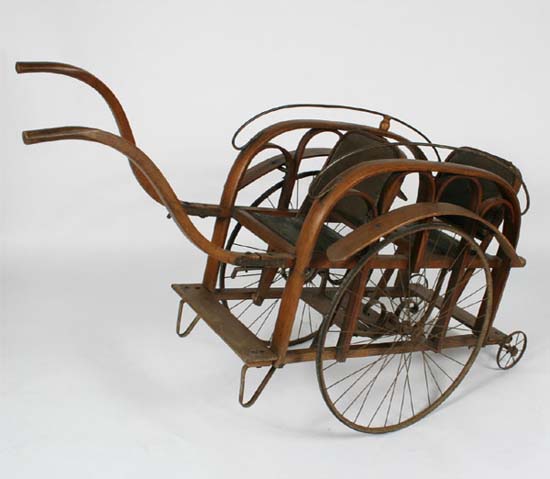
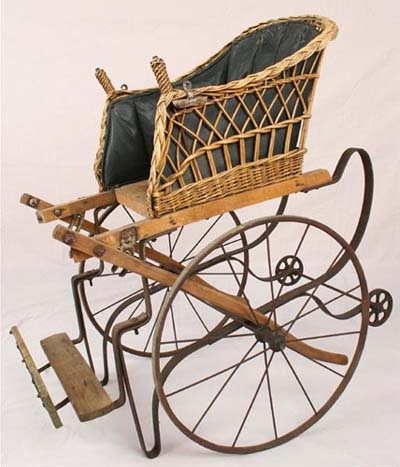
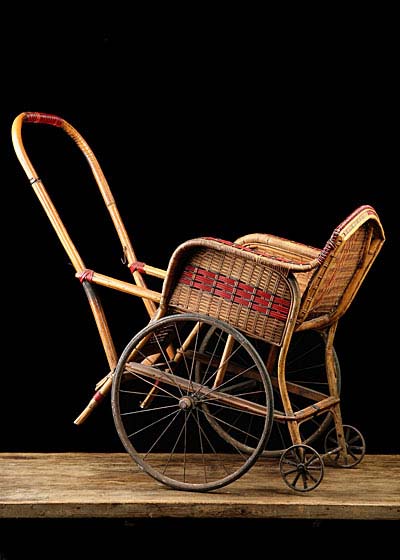
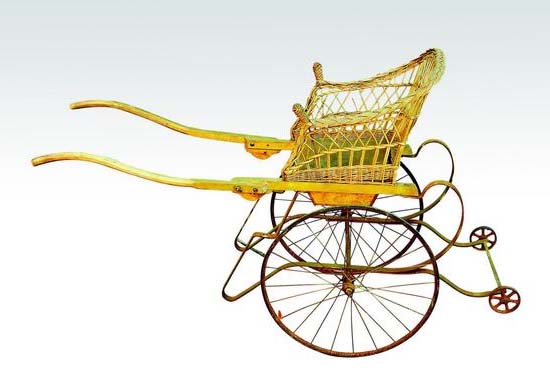


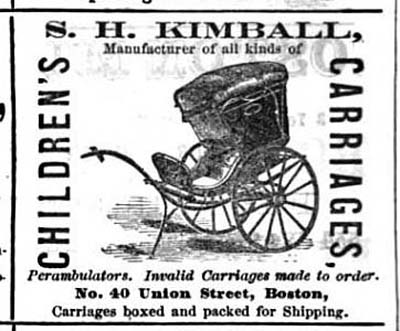
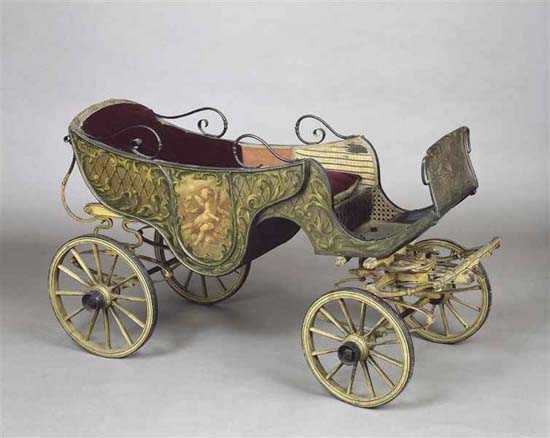
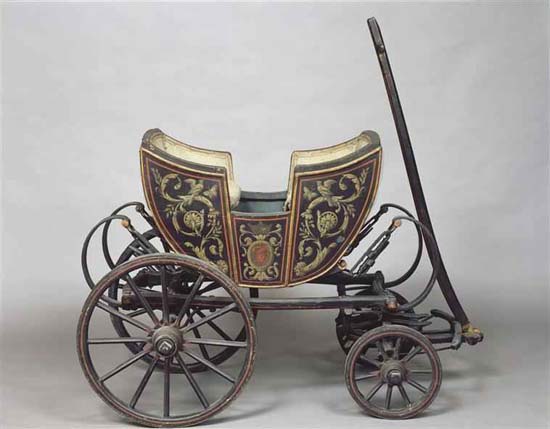
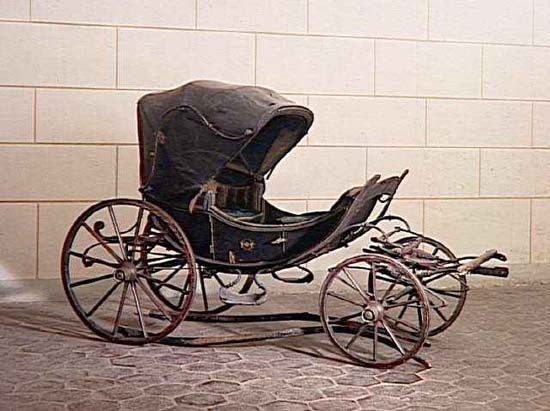
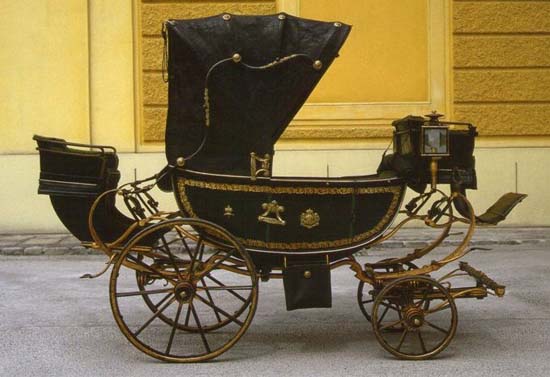
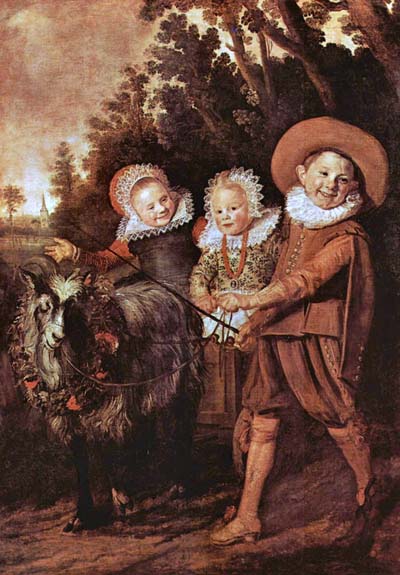
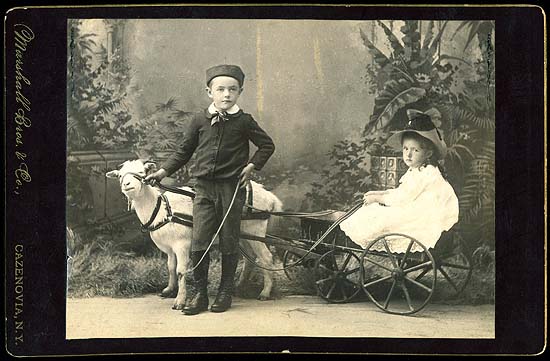
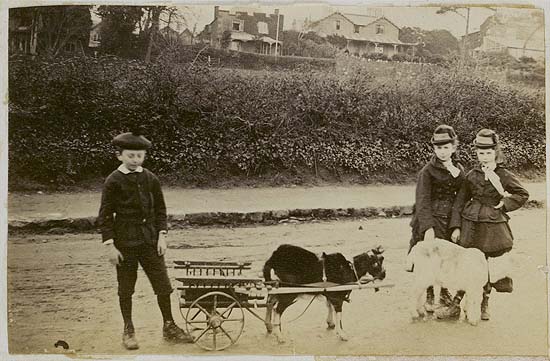
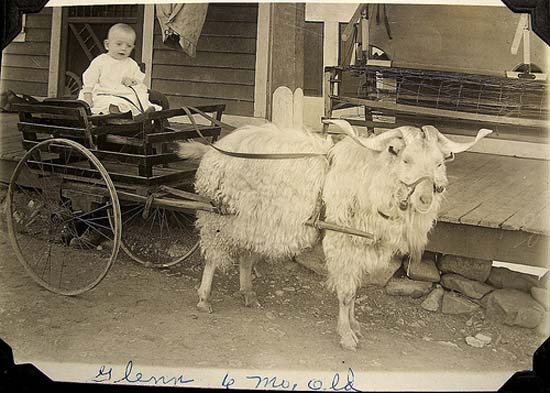
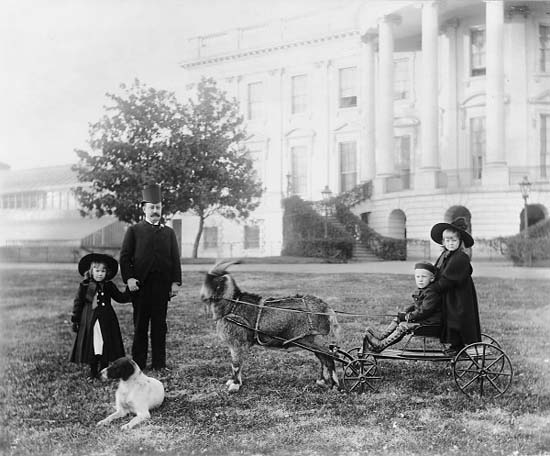

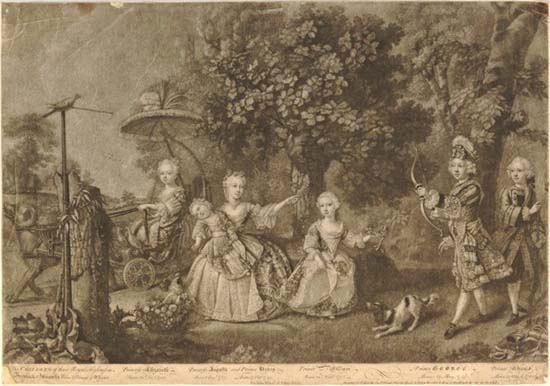
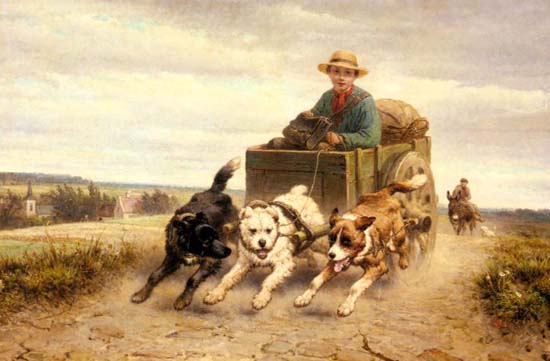
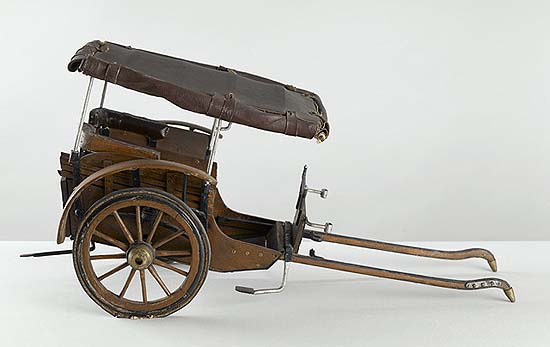
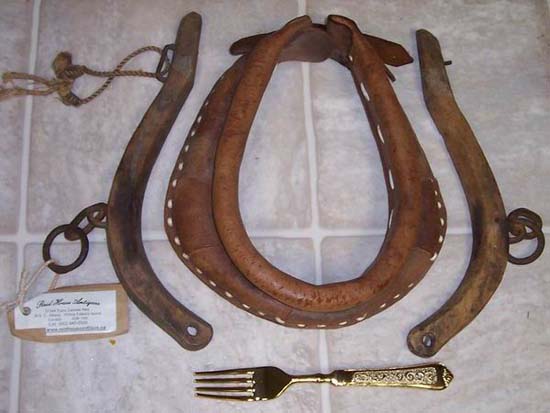
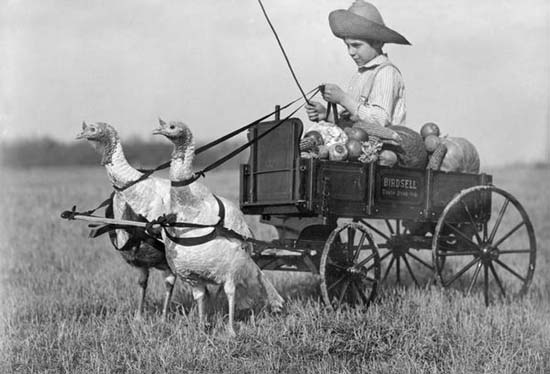
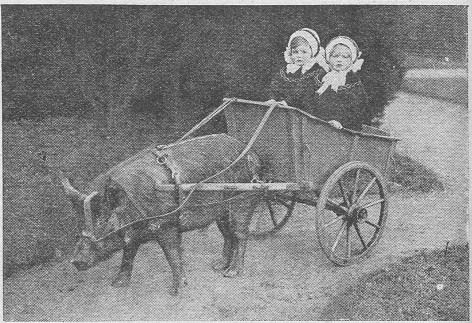
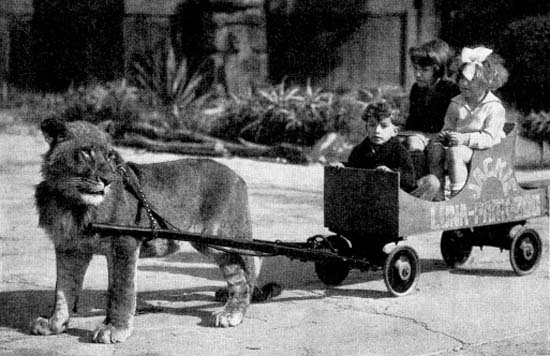
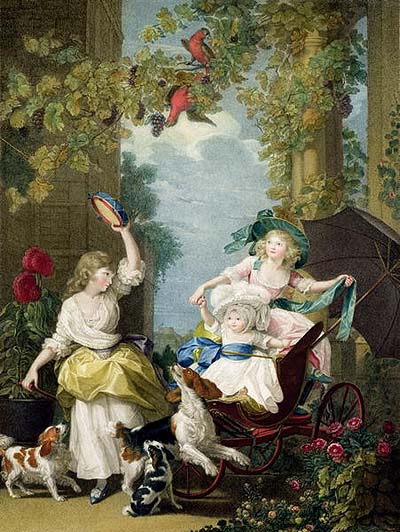
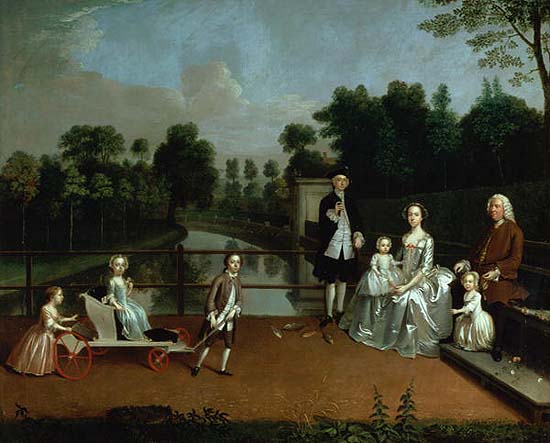
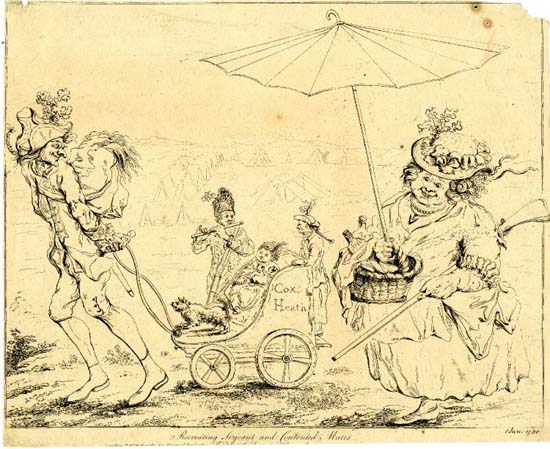
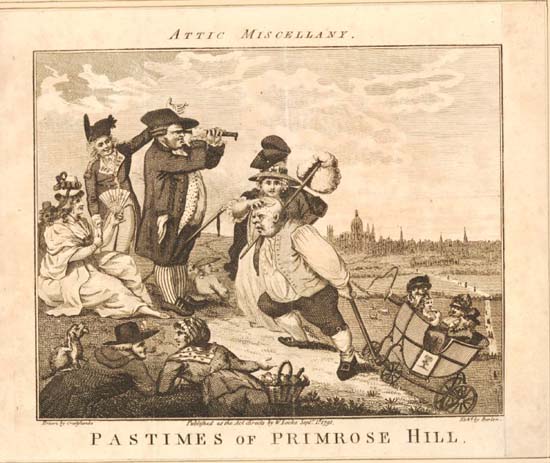
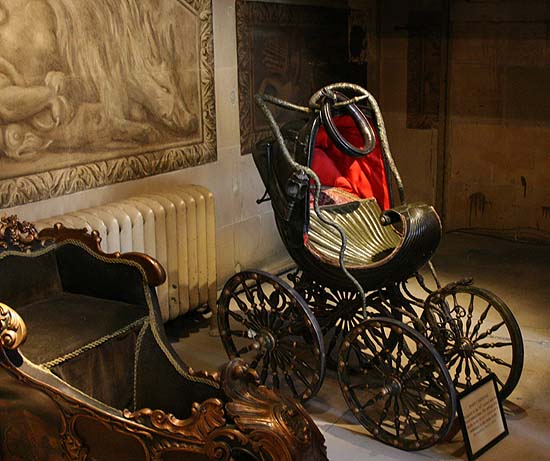
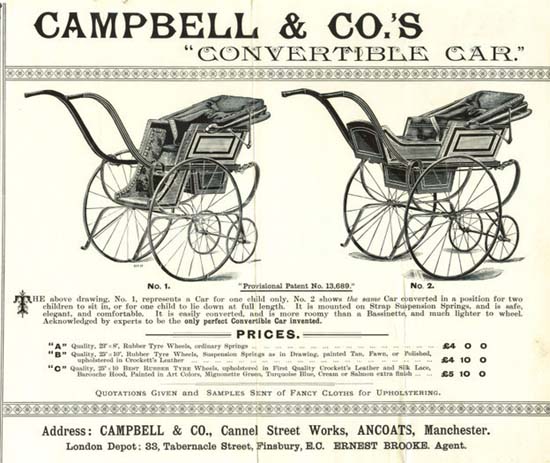
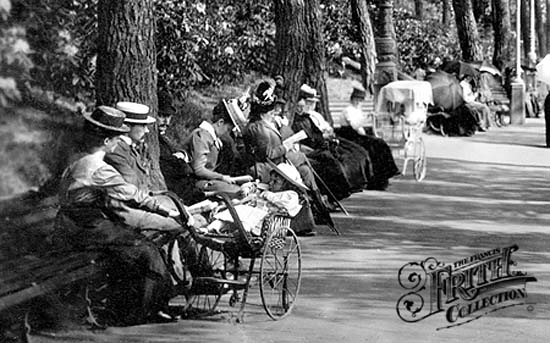
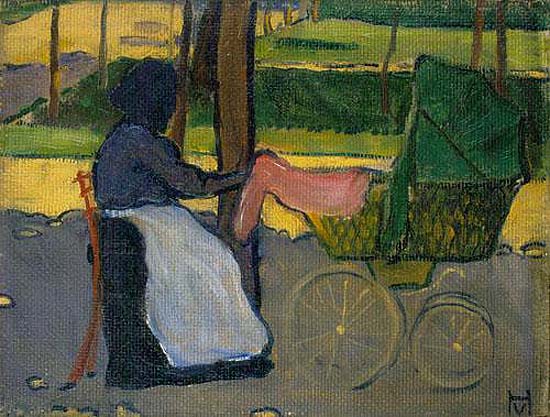

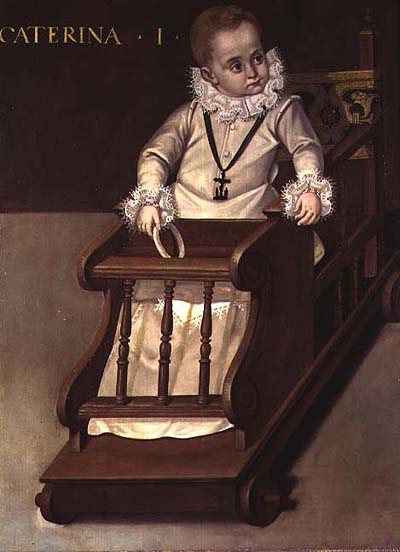
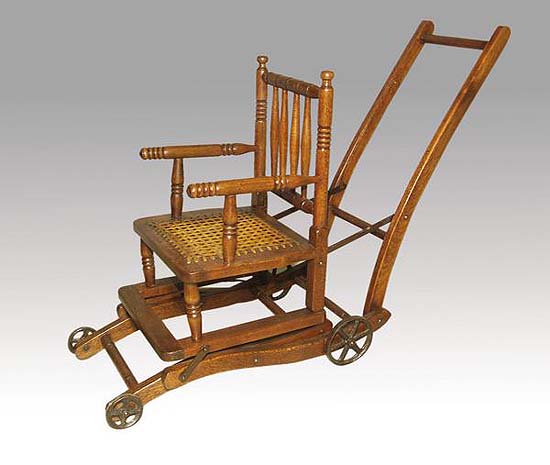
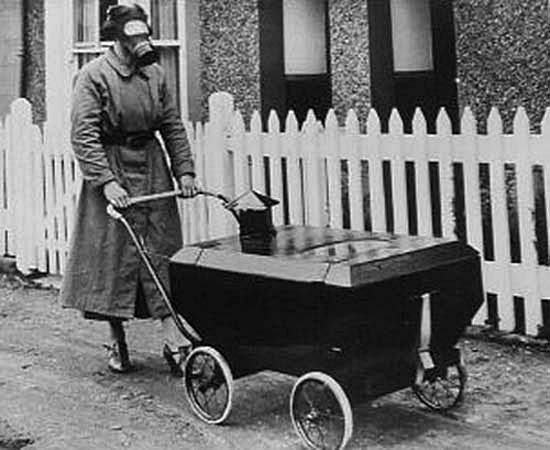

























































1 comentario:
Very interesting, a different way to study history. Things change, but not so much.
Publicar un comentario